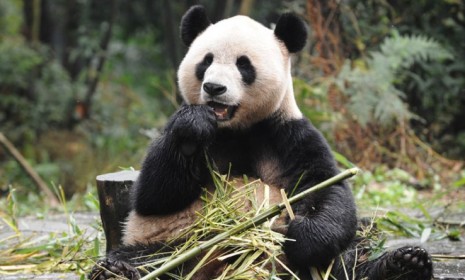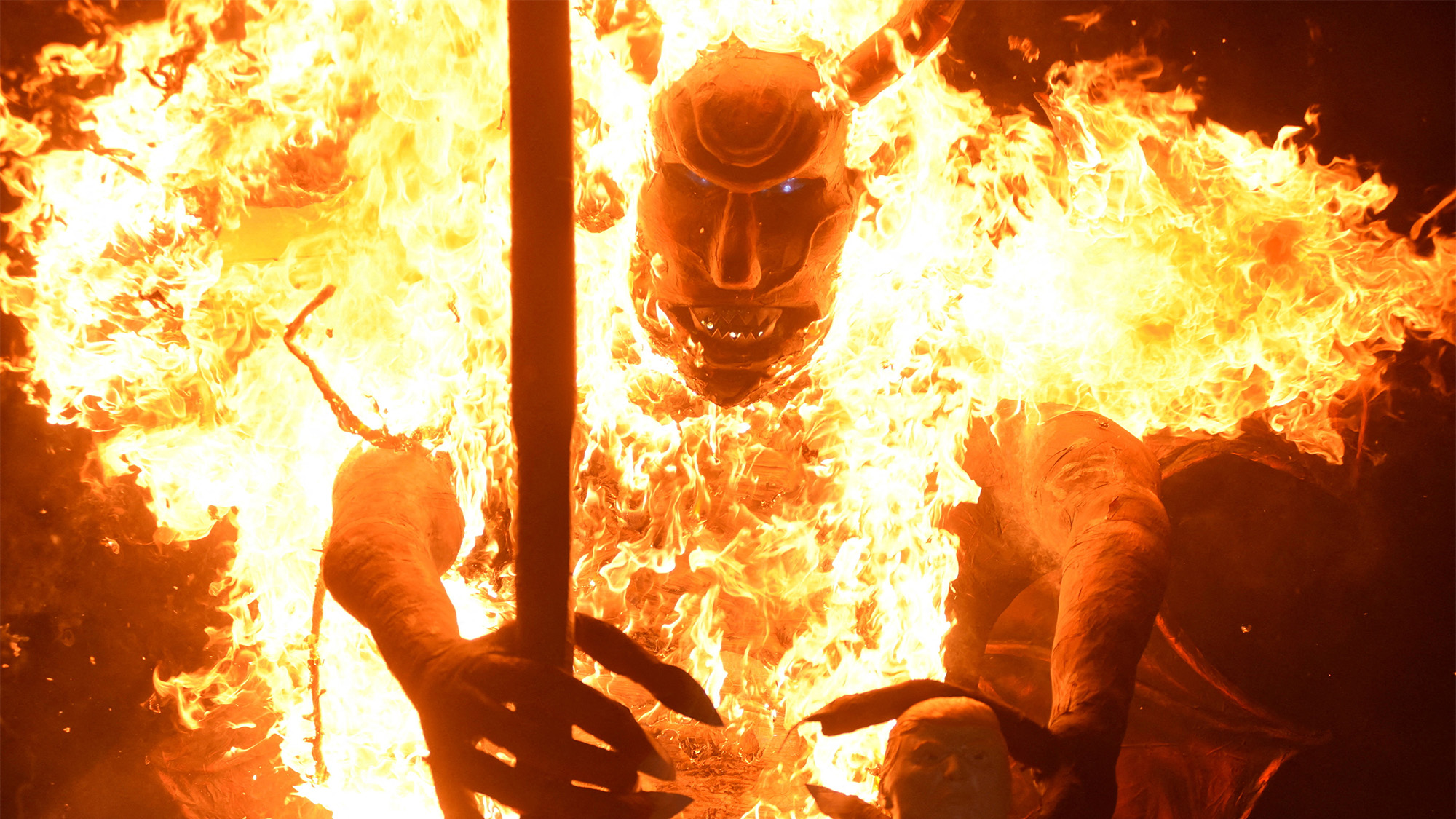Did early humans eat pandas?
Fossil records from China suggest that the famously adorable bamboo munchers were often slashed to death by primitive people

Many animal lovers have a soft spot for pandas. After all, they're cute, cuddly, and often captivating. But our relationship with the bamboo-nibbling bears wasn't always so affectionate. According to one Chinese scientist, ancient remains of the animals suggest that prehistoric man used to brutally hunt pandas — and then eat them. Here's what you should know:
What proof does this scientist have?
Wei Gunabiao, head of the Institute of Three Gorges Paleoanthropology at a Chongqing museum, says fossil records show evidence of human-inflicted wounds on ancient pandas. "We have studied many samples of panda fossils excavated in Chongqing from the sites where humans once lived," says Wei. "A large number of them showed that pandas were slashed to death by man."
The Week
Escape your echo chamber. Get the facts behind the news, plus analysis from multiple perspectives.

Sign up for The Week's Free Newsletters
From our morning news briefing to a weekly Good News Newsletter, get the best of The Week delivered directly to your inbox.
From our morning news briefing to a weekly Good News Newsletter, get the best of The Week delivered directly to your inbox.
But how does Wei know that people ate pandas?
"In primitive times, people wouldn't kill animals that were useless to them," Wei tells the Chongqing Morning Post. Fossils show that the animals were often cut up, and because our ancestors wouldn't kill an animal just for killing's sake, we can logically deduce that early man consumed panda meat.
Why pandas?
"As weird and stringy as panda meat sounds, those cute black and white critters of prehistoric times were not quite the same as the gentle, giant bears we know today," says Jessica Rawden at CinemaBlend. Just 10,000 years ago in Chongqing's high mountains, the animals were smaller — about "the size of Tibetan mastiffs," says Wei — and much more abundant. In other words, they were a far cry from the slightly goofy endangered creatures observed carefully in zoos today. It's likely that "prehistoric men and women quite enjoyed them," says Rawden. "I just wonder if they were a delicacy, or an everyday sort of meal."
A free daily email with the biggest news stories of the day – and the best features from TheWeek.com
Sources: The Associated Press, CinemaBlend, Hindustan Times, San Diego Zoo.org
-
 Will there be peace before Christmas in Ukraine?
Will there be peace before Christmas in Ukraine?Today's Big Question Discussions over the weekend could see a unified set of proposals from EU, UK and US to present to Moscow
-
 Quiz of The Week: 6 – 12 December
Quiz of The Week: 6 – 12 DecemberQuiz Have you been paying attention to The Week’s news?
-
 The week’s best photos
The week’s best photosIn Pictures A man's best friend, the elephants in the room, and more